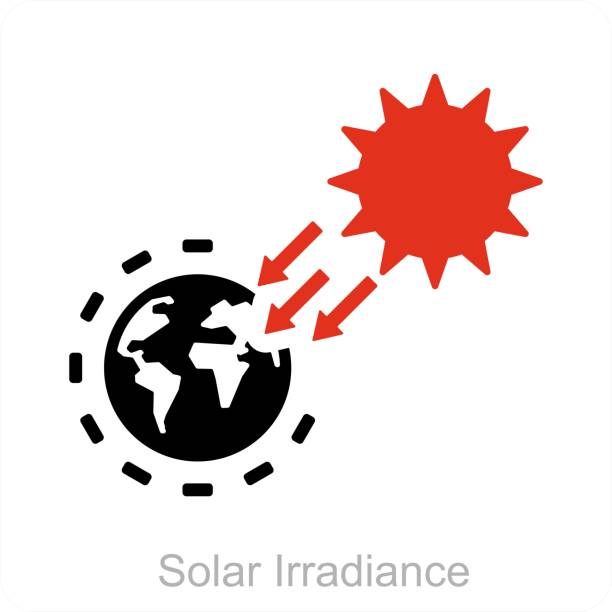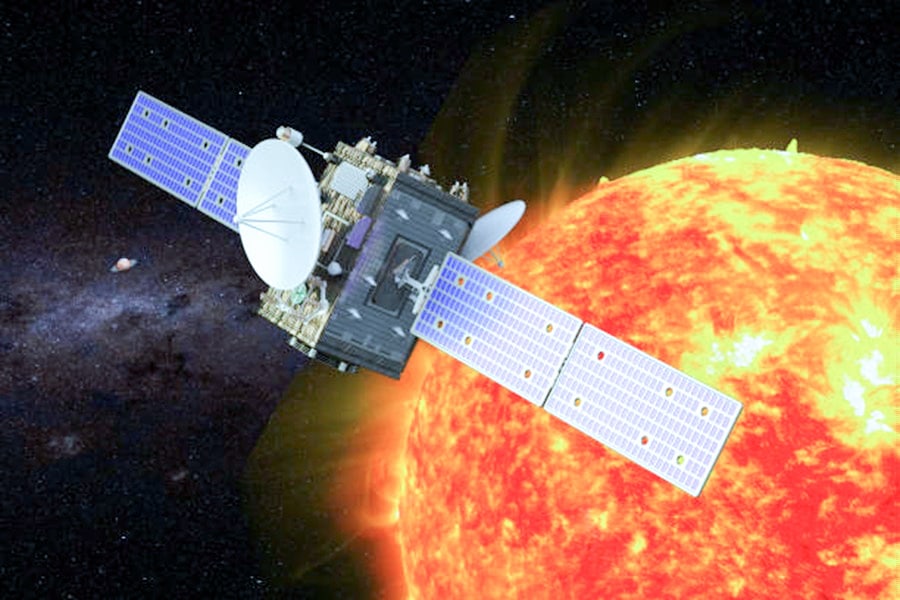Australia, with its vast landmass bathed in sunshine, is a natural leader in harnessing the power of the sun. However, effectively capturing this solar energy requires a deep understanding of solar irradiance, also called solar insolation. This article delves into the concept of solar irradiance, its key aspects, and its crucial role in designing and optimising solar energy systems.

What is solar irradiance?
Solar irradiance is the amount of solar radiation (energy) received from the sun per unit area over a specific period. It is measured in watts per square meter (W/m²) and indicates the intensity of sunlight hitting a surface. This metric plays a vital role in determining the potential electricity generation of a solar power system.
Key factors affecting solar irradiance
Several factors influence the amount of solar irradiance reaching different parts of Australia:
- Latitude: Places closer to the equator, like northern Australia, generally receive higher solar irradiance due to the sun’s angle of incidence being closer to perpendicular. This translates to more direct and intense sunlight hitting solar panels.
- Seasonality: Solar irradiance varies throughout the year, with peak irradiance observed during summer and lower levels during winter. This seasonal variation impacts the overall energy output of solar panels and needs to be factored into system design.
- Time of day: Solar irradiance naturally fluctuates throughout the day, reaching its maximum around noon and decreasing towards sunrise and sunset. This daily cycle influences the power generation profile of a solar system, often requiring energy storage solutions for a consistent power supply.
- Cloud cover: Clouds act as barriers, significantly reducing the amount of sunlight reaching the earth’s surface. Cloudy days lead to lower solar irradiance and decreased electricity generation from solar panels.
- Altitude: Higher altitudes tend to receive slightly higher solar irradiance due to the thinner atmosphere, allowing less light attenuation. While the overall impact of altitude in Australia may be modest compared to other factors, it can still be relevant for certain locations.
- Dust and aerosols: Airborne dust and aerosols can also attenuate solar radiation, impacting irradiance levels. This is particularly relevant in parts of Australia prone to dust storms.
Understanding solar irradiance data
Australia is fortunate to have a robust network of weather stations and satellites continuously monitoring solar irradiance data. Resources like the Australian Bureau of Meteorology (BOM) and the Australian Renewable Energy Agency (ARENA) provide valuable solar irradiance data and mapping tools. This data is crucial for:
Site assessment: Potential sites should be evaluated based on their historical and projected solar irradiance levels when installing a solar power system. This helps predict the expected energy output and optimise system design.
Economic feasibility analysis: By considering solar irradiance data, the potential financial viability of a solar project can be assessed through its estimated energy production and cost-effectiveness.
System sizing: The number and type of solar panels can be accurately determined based on the estimated solar irradiance and desired energy needs.
To find out how much a solar system with storage or even an EV charger will cost, try our easy-to-use solar power and battery storage calculator! Our solar calculator will generate performance data as well as possible cost savings.
We can forward your information to 3 trusted local installers in your area to obtain free, no-obligation solar quotes.
Find out how much you can expect to pay for solar
Ready to find out more? Get FREE quotes for solar, batteries + more
*Prices quoted are to be used as a guide only and do not factor in state and other rebates and incentives. Includes STC discount.
Importance of understanding solar Irradiance for solar energy generation
Understanding the variations in solar irradiance across Australia is critical for several reasons:
- Optimising system design: Knowing the expected irradiance levels helps determine the optimal size and number of solar panels needed to meet specific energy requirements. This ensures the system generates sufficient power without under-capacity or over-capacity issues.
- Predicting energy output: By analysing historical irradiance data and weather forecasts, solar energy developers and users can predict the expected electricity output of their systems. This allows for informed decision-making regarding energy storage needs and grid integration.
- Maximising return on investment: By understanding the impact of irradiance on energy production, investors can make informed decisions regarding the financial viability of solar projects, considering the cost-benefit analysis over the system’s lifespan.
Implications for solar energy generation and system design
Understanding solar irradiance is essential for optimising solar panel performance and maximising energy generation in Australia. Here are some key considerations:
- Panel tilt angle: Depending on the location and seasonal variations in solar irradiance, adjusting the tilt angle of solar panels can significantly improve energy capture. This optimisation ensures the panels receive maximum direct sunlight throughout the year.
- Panel technology: Different solar panels have varying efficiencies in converting sunlight into electricity. Selecting panels suitable for the expected irradiance levels in a specific location can optimise energy production.
- Energy storage solutions: As solar irradiance fluctuates, incorporating battery storage systems can help store excess energy during peak production periods and release it during low irradiance or peak demand. This ensures a more consistent and reliable electricity supply.
- Shading considerations: Avoiding obstructions such as trees and buildings that cast shadows on the panels is crucial for maximising solar irradiance reaching the panels and, consequently, energy generation.
Challenges and solutions
While Australia enjoys a favourable climate for solar energy, certain challenges associated with solar irradiance need to be addressed:
- Spatial variations: Irradiance levels can vary significantly across different regions of Australia. This necessitates careful consideration when planning large-scale solar projects to ensure optimal placement and resource utilisation.
- Intermittency: Solar energy generation fluctuates based on the availability of sunlight. This intermittency can challenge grid stability and requires solutions like energy storage, demand-side management, or integration with other renewable energy sources.
Embrace the energy efficiency revolution by upgrading your solar systems and adding a battery or solar inverters with Energy Matters.
Energy Matters recommends cost-effective solar batteries such as GoodWe, Enphase, sonnen, Fronius, Fimer, Sungrow, Tesla, Sigenergy and LAVO.
With our 3 free solar quotes, you can compare plans from pre-qualified and vetted installers in your area and find the perfect solution for your home and business. Harness the sun’s power and save money on electricity bills while reducing environmental impact. Let Energy Matters guide you towards a brighter, more sustainable future.
Advanced technologies and resources
Several advanced technologies and resources are available to assist with understanding and utilising solar irradiance data in Australia:
- Solar resource maps: These maps, readily available from various government and research institutions, visually represent the average annual solar irradiance levels across different regions.
- Solar forecasting tools: These tools utilise advanced algorithms to predict future irradiance levels based on historical data and weather forecasts, allowing for better grid management and energy planning.
- Satellite imagery and ground-based monitoring stations: These provide real-time and historical data on solar irradiance across the continent, aiding in system design and optimisation.

Moving forward: A brighter future with solar energy
By harnessing the power of solar energy, Australia can contribute significantly to its renewable energy goals and reduce reliance on fossil fuels. By understanding and effectively utilising resources that provide solar irradiance data, stakeholders can design and implement efficient solar energy solutions that contribute to a sustainable future for the nation.
Energy Matters will feature stunning homes installed with the latest solar technology every Saturday at 3.30 pm on Renovate or Rebuild on Channel 9. Be sure to watch this show; you don’t want to miss it!













































